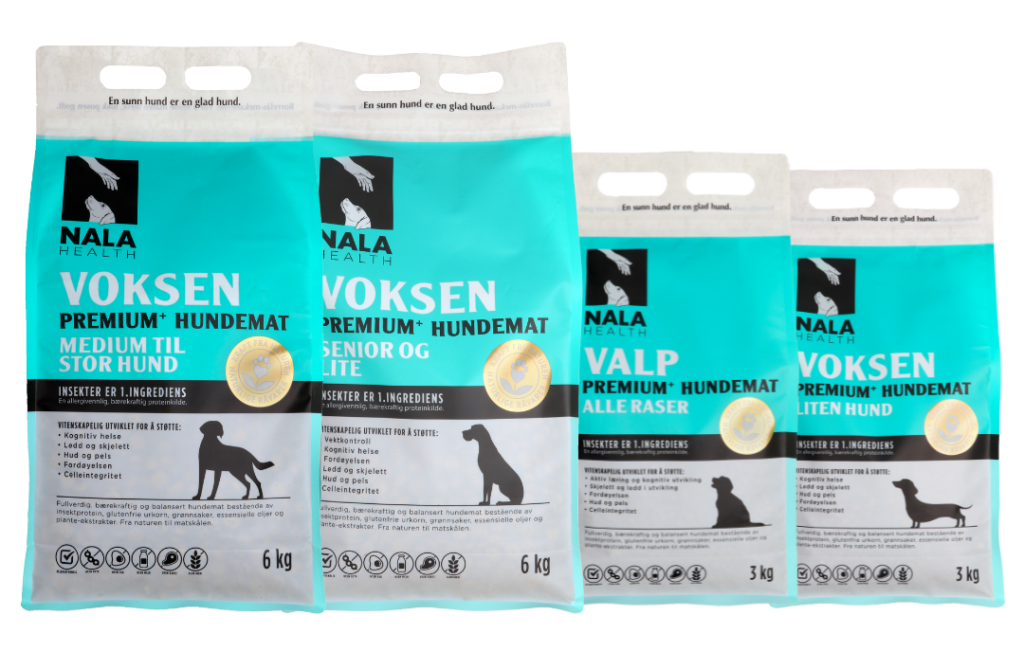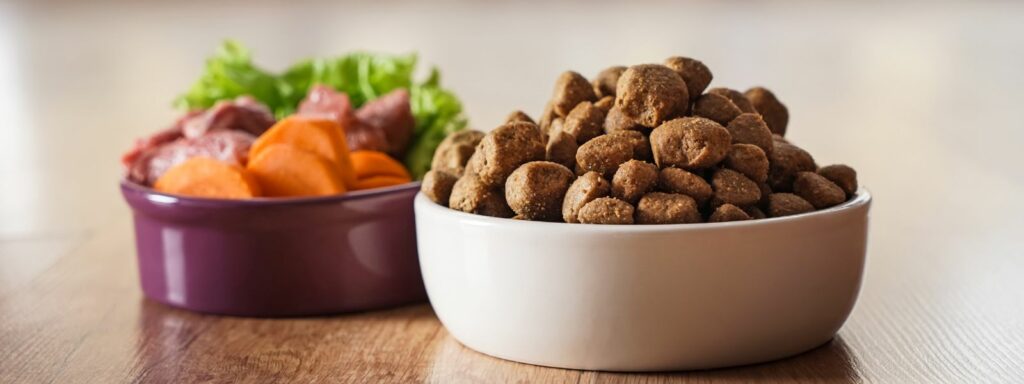Processed food and dog health
 Cecilie Hemsen Berg
Cecilie Hemsen Berg
The aisles of supermarkets and pet stores alike are lined with an array of processed foods. For humans, it’s a topic that’s been debated at length. But what about our four-legged companions? How do the principles of food processing apply to the meals we feed our pets, and what should pet owners know to make the best choices for their furry friends? The truth is, not all processed foods are created equal, and some processed foods can actually offer numerous benefits, making them an essential part of a balanced diet both for us and for our dogs.
Let’s dive into the world of food processing, its stages, and how understanding it can guide us in selecting the most nutritious and safe options for our dogs.
Stages of food processing
Whether dog food is cooked in homes, small-batch kitchens, or large-scale production facilities, the core objectives of processing remain consistent: ensuring safety, optimising nutritional content, and delivering palatable flavours. Through this processing, we can extend the shelf life of the food, make it more convenient for pet owners to serve, and guarantee that the dietary needs of our furry friends are met. Every type of dog food, whether raw, cooked, or kibble, undergoes a level of processing. Actions as simple as grinding meat, dehydrating veggies, or blending ingredients transform raw materials into “primary processed” dog food.

The depth and techniques of processing can differ substantially, largely dependent on the ingredients in use and the intended final product. As dog owners, choosing nutritionally rich options and deciphering food labels are crucial in sidestepping unwanted ingredients and additives. Importantly, some processing methods are essential to protect food from pathogens caused by mould, bacteria, viruses, etc. thus drastically cutting down the possibility of food-related illnesses in pets. In 2018 the NOVA system was created to classify foods according to processing, but according to some scientists, this classification falls short on determining the nutritional value of the final product. While there are different frameworks to describe food processing stages, a broad differentiation can be outlined as follows:
1. Primary processing
Definition
Simple actions such as peeling, slicing, grinding, freezing or chopping are a form of processing that changes the food from its natural state to a “primary processed” food. This maintains the basic nature of the food so that it is recognizable to the consumer.
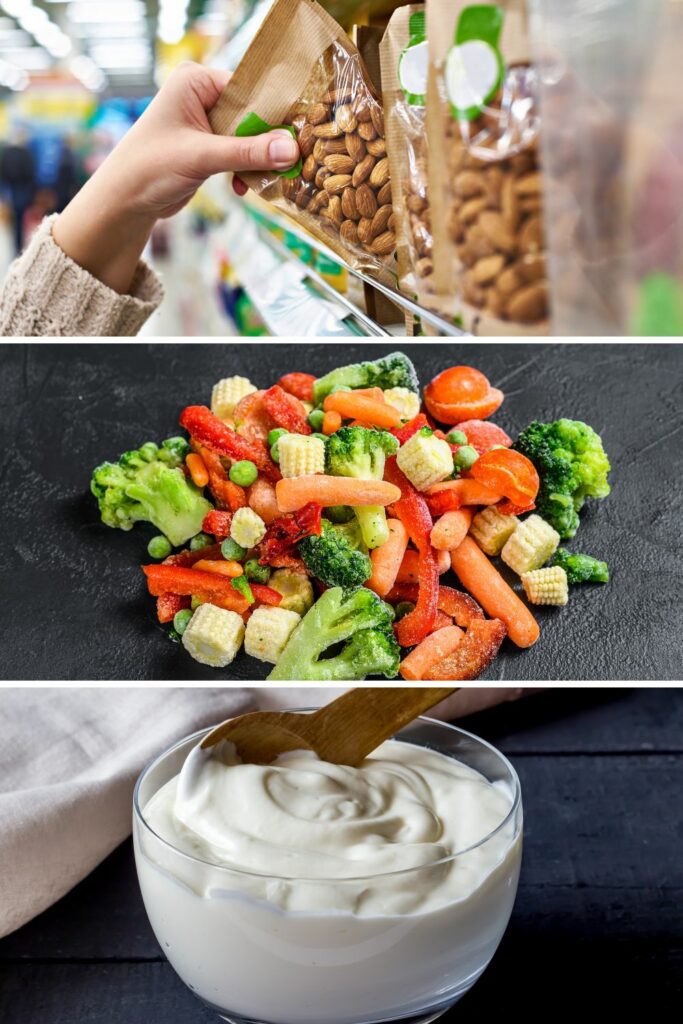
Examples
- Plain, dried meat
- A bag of raw almonds that have been harvested, shelled and packaged for sale.
- Dry whole legumes (lentils, chickpeas, kidney beans)
- Sliced vegetables
- Frozen berries and vegetables
- Dried fruit
- Rice, cereals and wholemeal flour
- Milk and yoghurt
- Eggs, fish and meat in a chilled, dried or frozen state.
Key Characteristics
The food remains very close to its natural state. There may be some physical changes like cutting or removing inedible parts, to provide consumers with cleaner, often more convenient versions of raw foods. The basic nutritional and physical properties do not change significantly.
- Preservation and additives: Often involves basic preservation methods such as drying, cooling, fermentation or freezing. These foods have no added preservatives, flavourings, colourings or other substances that change the nature, taste or appearance of the food.
- Shelf Life: Compared to more processed foods, some primary processed foods have a shorter shelf life because no preservatives have been added.
2. Secondary processing
Definition
Secondary processed food refers to food products that have undergone a transformation from their natural state, but not to the extent that their basic characteristics are lost. They are usually made by combining ingredients from group 1 (primary processed food). They can include “processed culinary ingredients” like salt, sugar, oil, spices, etc.
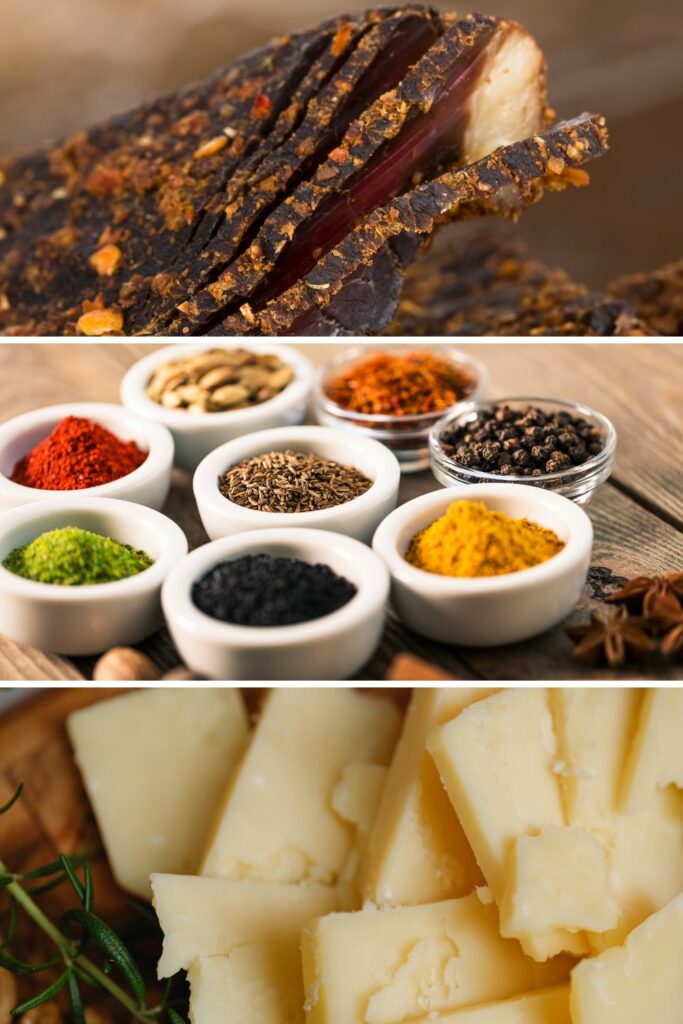
Examples
- Biltong and droëwors.
- Milled grains (like flour).
- Canned fruits and vegetables.
- Frozen whole fish or meat.
- Tinned fish.
- Pasteurised milk and “fresh” cheese (such as chevre/goat cheese, ricotta, cottage cheese).
- Processed culinary ingredients include oils, butter, sugar, salt, miso, herbs and spices meant to prepare, season and cook food.
Key Characteristics
These products can include a combination of ingredients from the primary group, and they have also been processed to reduce perishability.
- Preservation and additives: Processes include various preservation methods such as cooking, baking, and fermenting. The purpose is to increase the shelf life, make it easier to digest, or give the food more flavour. Processing can also add nutritional value to the raw ingredient, increasing bioavailability.
- Shelf life: These products often have a slightly longer shelf life than primary products.
3. Tertiary processing and Ultra-processed
Definition
Tertiary processed food combines primary and secondary food products to create ready-to-eat food and drink products. These foods often contain 5 or more ingredients, in addition to preservatives and other additives. Some may be high in added sugar, salt and unhealthy fats. Ultra-processed food is often associated with junk food and deep-fried food.
Examples
- Kibble.
- Tinned dog food and sausages for dogs.
- Ice cream for dogs and humans.
- Dog biscuits.
- Boerewors, seasoned chicken skewers, meatballs and fish cakes.
- Protein powders and superfood powder mixes.
- Packaged snacks.
- Ready-to-eat meals.
- Mayonnaise, mustard, and ketchup.
- Cordials, soft drinks and fruit juices.

Key Characteristics
Sometimes referred to as convenience food, because the main goal is to provide the consumer with ready-made meals and drinks.
- Preservatives and additives: These foods often contain additives to improve/change texture, colour and/or taste (such as whey, yeast extract, emulsifiers, thickeners, dyes, bulking agents, sweeteners, including ingredients listed as “natural”). These products can also be fortified with vitamins, minerals or functional compounds such as probiotics which can significantly enhance their nutritional value and help combat nutritional deficiencies and promote overall health.
- Shelf life: These products have been processed to offer a longer shelf life using different preservation methods and adding preservatives to protect against mould, fungus, and bacteria.
Depending on the strictness of the definitions used, there is a sliding scale between food that could be seen as a high-end secondary processed food or a low-end tertiary processed food. Commercially prepared food can in other words offer a complete meal plan formulated by a dietician to guarantee all nutritional needs are covered in one meal.
Impact of processed dog food on nutritional value
Depending on the type of processing dog food undergoes, some nutrients may be lost, while others become easier for our furry friends to digest. For instance, cooking meat enhances the digestibility of its protein content. Furthermore, raw meats can sometimes harbour harmful bacteria and parasites, risks which are mitigated during the cooking process.

Legumes, like lentils and chickpeas, also become more digestible when cooked. When these legumes undergo processing, it increases the availability of protein and reduces certain compounds that can affect the absorption of essential minerals.
Different processing methods will also increase the bioavailability of micronutrients in vegetables like broccoli, cauliflower, carrots, and sweet potatoes to mention a few.
Tertiary processed dog food
While some highly processed dog food and dog treats teem with unhealthy fats, artificial flavours, sugars, and colourants — the “junk food” equivalent for dogs, there are also commendable processed options crafted with premium ingredients that pack a nutritional punch. High-quality dog food is formulated and developed by experts to meet our dog’s daily requirements ensuring they eat a balanced diet. The choice of ingredients, the processing method and packaging play pivotal roles in determining the nutritional quality and health benefits of the end product. Is the dog food made solely with profit in mind, or is it crafted to benefit our dog’s health?
Healthier alternatives often feature treats and kibble made from wholesome ingredients and undergo processing that bolsters their nutritional profile. Just as with human foods, distinguishing between the quality of their food, processed or not, is pivotal in making optimal choices for our furry companions.
Some ingredients found in low-quality ultra-processed dog foods might include by-product meals, 4D livestock animals, rendered fats, corn gluten meal, soybean meal, colourings, sugar and artificial flavours. These ingredients aren’t conducive to optimal health and can compromise the final quality of the product.

High-quality processed dog food, on the other hand, contains nutritious ingredients, natural preservatives, and is void of fillers. Such foods prioritise the health and well-being of dogs, ensuring that each bite delivers essential vitamins, minerals, clean proteins and fats necessary for their vitality. Manufacturers of premium products often source ingredients responsibly, taking care to include wholesome elements like clean, quality meats and fats, vegetables, fruits, and beneficial grains. They avoid using artificial additives or cheap fillers that don’t offer any nutritional value.
Another perspective is to consider our dog’s life stage (puppy, adult, senior), activity levels and general health. Many commercial dog food producers offer food specifically formulated to address these needs. As a result, dog owners who choose superior foods can have peace of mind, knowing they are providing their furry companions with meals that support their longevity and overall health.
Processing offers a variety of preservation methods to keep the food safe in addition to extending shelf life. Steam cooking, baking, fermenting, natural preservatives like ascorbic acid, vitamins C and E, antioxidants, rosemary and oregano will assist with protecting ingredients from contamination (mould, bacteria, etc.) and oxidation. We should avoid BHA, BHT, sodium nitrites, MSG, trans fats, hydrogenated vegetable oil, potassium bromate, artificial food colourings and dye, artificial flavours, and any kind of sugar and sweeteners in addition to rendered ingredients.
Nala Health’s approach to processed dog food
Within the landscape of dry food, there exists a spectrum of quality and nutritional value. While some might just fill your dog’s stomach and provide a minimum of vitamins and minerals, others, like Nala Health, are designed to nourish them thoroughly. Our products are a combination of primary, secondary, and tertiary processed ingredients, providing a comprehensive, balanced meal for your dog.
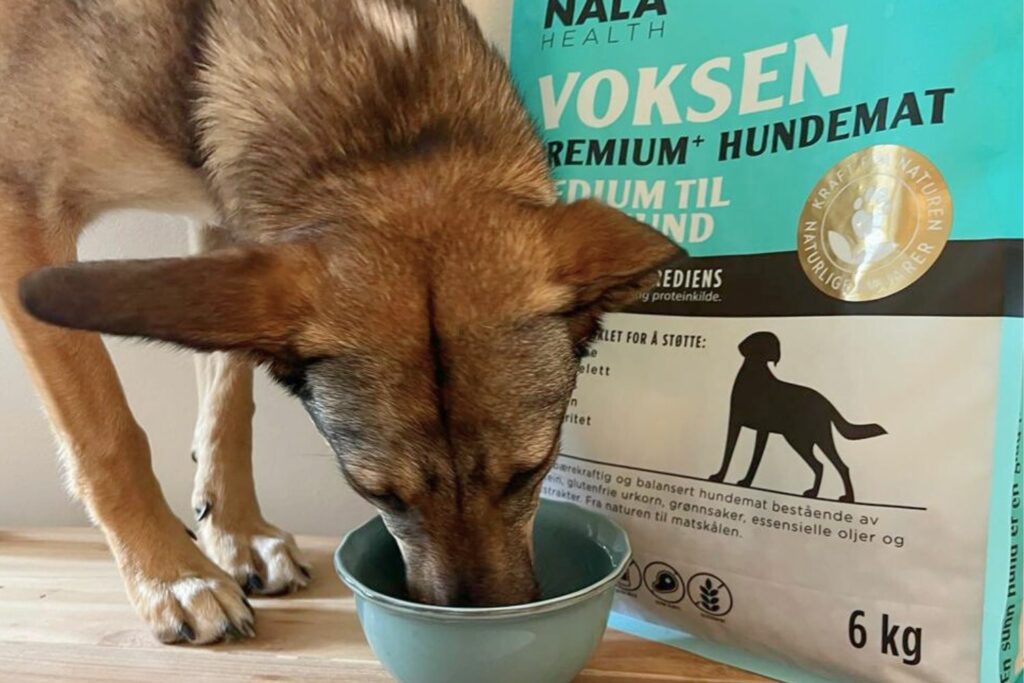
When evaluating our product in the context of processing categories, it’s evident that our food leans towards the tertiary end, mainly because of the varied components like extracts, isolated proteins, supplementary vitamins, minerals and other health-promoting additives. Yet, it’s crucial to note that our approach to tertiary processing retains a closer tie to natural, less processed methods. Many of our ingredients maintain their inherent integrity, resembling their initial state.
Recognizing the nuances of processing and its impact on nutritional content, Nala Health takes diligent measures. We counterbalance nutrient losses that might occur during steam cooking and baking by optimising the nutrient density of our food. Beyond just creating dog food, our recipes are underpinned by scientific research and expertise in canine nutrition. Ingredients such as black soldier fly larvae meal, coconut oil, cold-pressed canola oil, chicory root, calcium butyrate, choline chloride, probiotics, nutritional yeast, L-carnitine, taurine, and various plant extracts not only serve essential dietary roles but also enhance flavour.
